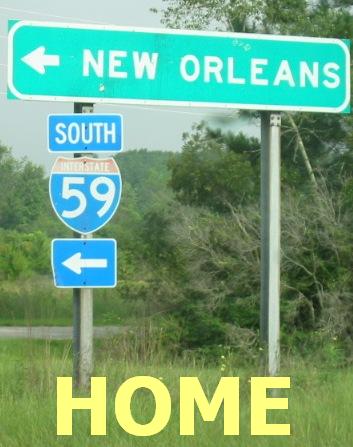The North Shore
The following option will not be pursued due to a plethora of considerations that resulted in an outcome in favor of partial New Orleans redevelopment with a number of stipulations. Nonetheless, we present this option here to demonstrate that it was fully considered and if pursued would occur according to the following:
As a team, we propose that we spur the development of St. Tammany Parish, providing the residents of New Orleans a relatively nearby though safer and healthier area to which to move back. The parish has grown from 220,000 residents to approximately 260,000 in the time since Hurricane Katrina. We would like to help further promote this development. This will help keep the economy of New Orleans functioning as we are planning on turning some of New Orleans’s current residential areas into parks and wetlands. There will still exist a demand for labor in ports and elsewhere. Hence, in order to provide a place for the workers to live, we are suggesting that we further develop some areas of St. Tammany. Furthermore, the enhanced economic prosperity of any parish in the area could only serve to benefit its neighbors, including New Orleans. Left behind in the New Orleans city core would not be minority-only, lower income slums but instead an eclectic mix of varying-income communities, from remnants of the Lower Ninth Ward to Victorian mansion-lined Uptown. Those residents displaced by the shutdown of various neighborhoods would themselves also not be entirely of one income group, but instead of a moderate income mix of middle and lower income residents. And seeing as how St. Tammany is a firmly middle to upper middle class community, these displaced residents would not be relocating to poorer quality neighborhoods and the associated problems of inferior school systems, higher crime rates, etc.
As for the actual acquisition of land in St. Tammany Parish for the development of new communities, an
amendment was recently passed by the voters of Louisiana on November 1, 2006, restricting the government’s use of eminent domain to develop land by stipulating that the government cannot simply take private land using eminent domain and then give it to other private holders for development. This leaves us with two options:
Option A: As a result of the high property values of St. Tammany Parish and the very high demand for land and housing, significant incentives will need be offered to landowners for the purpose of persuasion to voluntarily sell the land to the government. Potentially, up to two times the current market value of the property could be offered to the current landowners. Once the government has acquired the land, sold voluntarily, it can then be sold to private developers for the explicit purpose of developing mixed-income housing units and neighborhoods.
Option B: Still use eminent domain to buy the land, except that by utilizing this approach, the land cannot be transferred to private developers. In this case, the land would remain under government control, but of course private developers would be used to build mixed-income subsidized housing (a.k.a. public housing).
As for specific areas of the North Shore of significant area that would have to be developed, there is a patch of undeveloped land (forest) a few miles north of Lake Pontchartrain that could be used to develop residential areas, although it is likely that this area is not large enough to support the entire displaced population of New Orleans. For this reason, it is necessary that we promote the growth of areas such as Covington, LA, the seat of St. Tammany Parish, which has already experienced rapid growth, and Mandeville, LA, which is a small town just north of the lake(
Foster, 1)
1.
For the purpose of commuting back and forth across Lake Pontchartrain, from St. Tammany Parish to New Orleans and back, we highly recommend a Maglev (magnetic levitation) train as these trains have unrivalled land-travel speeds, potentially being able to cross the lake’s span within ten minutes time, save energy (through lowering the marginal fuel expenditure per passenger compared to automobiles) and usher in a new era of green energy and living in this high-pollution area. Of course, other forms of efficient, smart-city-design mass transportation would be acceptable as well. However, for a comparable cost a large eight-lane highway could also be built the same distance in addition to the existing highway system. But doing so would negate the ecologically friendly, forward-looking theme of the original Maglev design. The resettlement of former New Orleans residents in St. Tammany Parish and the chance to in many ways build a city from the ground up would provide a rare city-design opportunity best utilized by designing according to the philosophies of New Urbanism and sustainable city design. New Orleans and St. Tammany Parish will come out of the Hurricane Katrina disaster as better, more environmentally friendly and sustainable cities than before.

